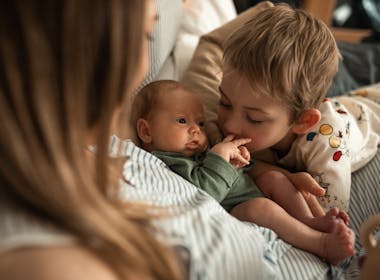When I attended my childbirth education class before having my son, I was the youngest in the class at age 24. I seem to be a little younger than the other parents dropping their children off at daycare, and I have noticed that many of my peers from college are still childless. These day-to-day experiences are consistent with new data released last month by the Centers for Disease Control and Prevention, which shows that the average age of a first-time mother in 2014 is a little over 26 years, up from 24.9 in 2000 and 21.4 back in 1970. Roughly 21% of first-time mothers in 2014 were ages 30-34 and another 9% were age 35 or older. Women are having children older, for various reasons, which creates some particular challenges for fertility health for both patients and providers.
How to tell when you are running out of time
Age does indeed matter when it comes to fertility. While there are many things a woman can and should do to optimize her health, fertility undoubtedly wanes as women age. Women are born with all the eggs they will ever have, unlike men, who are constantly producing new sperm. Toni Weschler, author of Taking Charge of Your Fertility says, “Female fertility does gradually diminish from the late 20s until about age 37, after which it begins to drop dramatically. In addition, the risk of miscarriage increases significantly as women age into their early 40s”[i].
In order to gauge when fertility may start declining (as it varies for each woman), Weschler recommends that each woman talks with her mother about the age she went through menopause. Menopause can be defined as a full year without menstrual periods. Weschler explains that fertility begins decreasing approximately 13 years before your last period[ii]. Sometimes this information can be difficult to determine, as many women in our mother’s generation had hysterectomies. Talking to older sisters or aunts (maternal side) may also help give similar information.
Front-line fertility rescues
Having kids later in life can have several implications. In 2013, more than $5 billion was spent on infertility testing and treatments in the United States alone. Couples who are finding it difficult to conceive are looking for answers so they can become parents. Charting your fertility (regardless of age) should always be a front-line strategy for conception.
Learning a method of fertility awareness has an extremely reasonable price tag and is a gold mine of wisdom regarding one’s cycle and reproductive health. It is common in my experience that couples who used fertility awareness to become pregnant tend to continue to use fertility awareness after the birth of their child to space future pregnancies, even if they had previously used hormonal or barrier forms of birth control.
When Valerie[iii] was 24, she was diagnosed with both Polycystic Ovarian Syndrome (PCOS) and endometriosis by her doctor after several months of charting her cycle.
“My doctor suggested trying for kids sooner rather than later, in our situation,” she said. PCOS can be detected on a fertility chart when cycles are consistently 38 or more days in addition to having timed blood hormone panels and follicular ultrasounds. The earlier PCOS is discovered, the more time a woman has to take steps to improve her health and fertility outcomes later in life. PCOS is highly treatable and should not be seen as a dead-end if a couple hopes to conceive.
Indicators of endometriosis include limited cervical mucus, pelvic pain preceding the period, moderate or severe menstrual cramps, and painful intercourse. Endometriosis can become progressively worse, which is why a physician may recommend that a couple move up their conception timeline when the symptoms are present or family history indicates a likely diagnosis and the couple has a strong desire for children. However, endometriosis may exist without symptoms for years. For some, the only sign a woman has endometriosis may be her inability to become pregnant.
Valerie and her husband conceived immediately when they began trying, to their surprise. She paid tribute to her improved healthy eating habits, incorporating more exercise, and perhaps, her age played a factor too.
Starting points to gauging your own chances
Older women can succeed at natural conception. Stacy[iv], for instance, who has PCOS, experienced an ectopic pregnancy within her first few years of marriage, and then, at age 41, went on to deliver a healthy baby girl through fertility-focused intercourse using the Creighton Model of FertilityCare coupled with a low dose of Clomid. Her story may be more the exception than the norm, though, at that age.
Signs of decreasing fertility with age include diminishing cervical mucus and increased cycle irregularities. Anecdotally, Weschler has observed that most women in their 20s have 2-4 days of highly fertile cervical mucus (“egg white”) whereas women in their late 30s may see one day or less of highly fertile mucus. Occasional or frequent anovulatory (without ovulation) cycles and shorter luteal phases (between ovulation and the first day of the period) are additional hallmarks of declining fertility in a woman in her late 30s[v]. I would confirm these observations from my own experience as a FertilityCare Practitioner.
While there may be no right or wrong age to try to have a child, learning about fertility health in general and your cycle in particular can be extremely helpful so that you can make an informed decision, motivated by factual information and good conversation with your spouse rather than by a vague fear of a “biological clock ticking.” Charting your cycles will empower you with solid information and perhaps even motivation to take advantage of your youth and energy to begin the beautiful adventure of parenting.
For more information, see also, How Fertility Awareness Helps Infertile Women Become Pregnant
References and notes
[i] Weschler, Toni. Taking Charge of Your Fertility, pg. 154
[ii] Weschler, Toni. Taking Charge of Your Fertility, pg. 155
[iii] Not their real names
[iv] Not their real names
[v] Weschler, Toni. Taking Charge of Your Fertility, pg. 222








Thank you for this informative post! I must be an oddity. Can count on one hand the number of times I ovulated in my 20s and early 30s, went a year without a period at age 33, so I guess I’ve already had menopause :D. Using wild yam cream brought my period back. Started taking a lot of evening primrose oil too and continue both to this day. In my late 30s started taking high quality nutritional supplements, and became much more active. I am now 45, have a minimum of 2 highly fertile mucus days almost every cycle, sometimes 3 and occasionally 4, and regular 30 day cycles. I have never been married or had intercourse, but I’m still hopeful of finding my spouse. Maybe I’m crazy, but I still feel like I could have those twin boys I’m always thinking of!
Impressive that you referenced Toni Weschler! Wish more Fertility Care Practitioners were comfortable doing so.